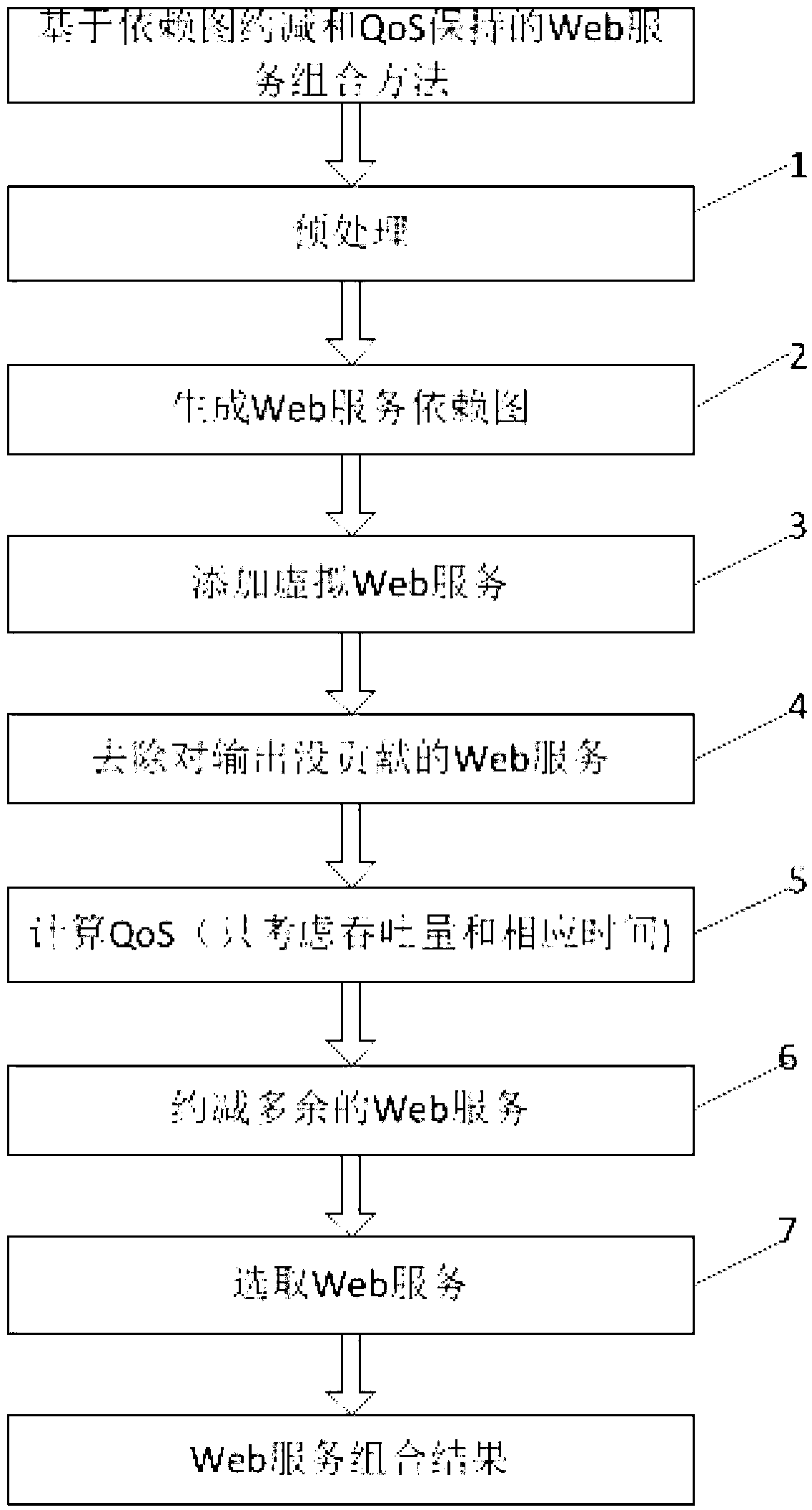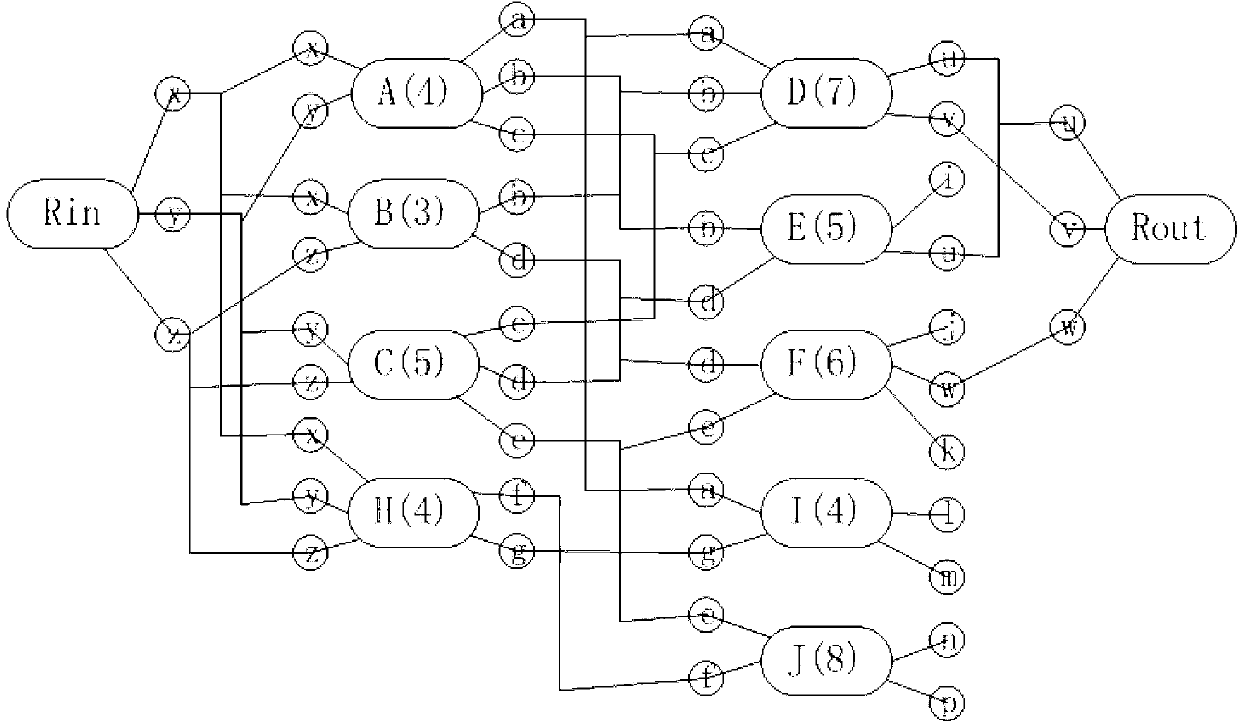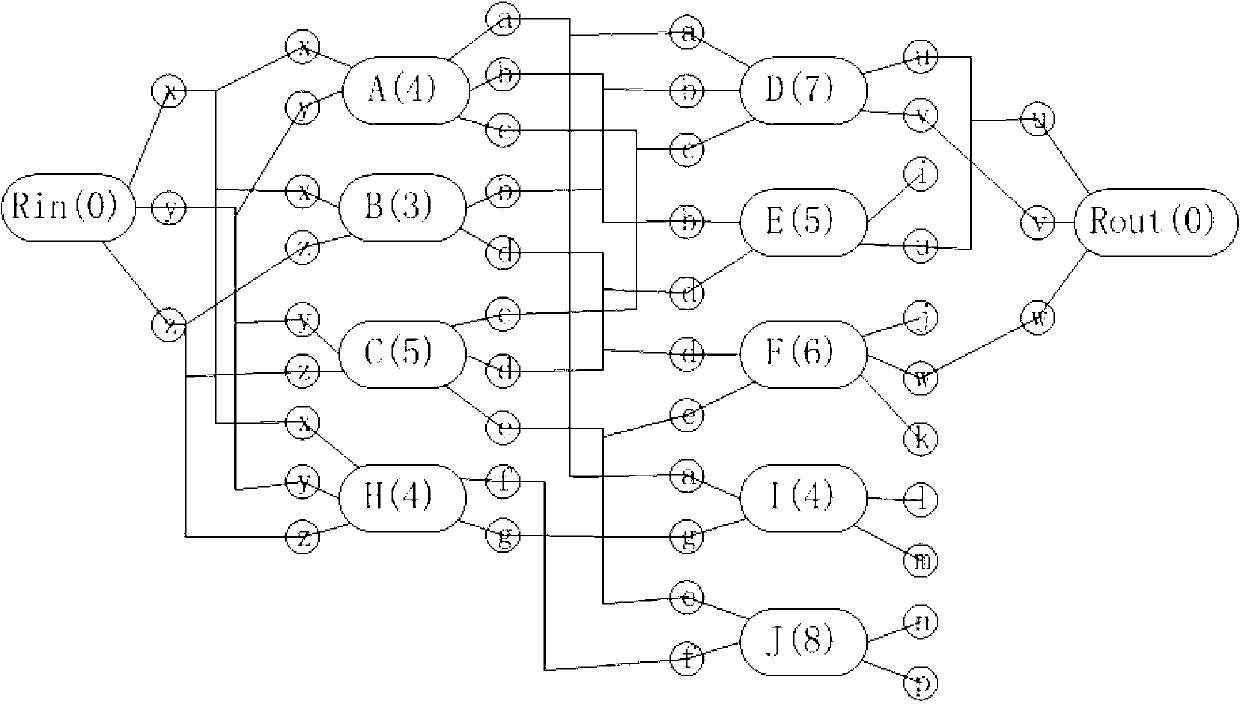Web service combination method based on dependence graph reducing and quality of service (QoS) holding
A combination method and web service technology, applied in the field of web service composition based on dependency graph reduction and QoS (quality of service) maintenance, can solve problems such as multi-redundant web services
- Summary
- Abstract
- Description
- Claims
- Application Information
AI Technical Summary
Problems solved by technology
Method used
Image
Examples
Embodiment 1
[0054] For a user request (R in , R out ), where R in = {x, y, z}, R out = {u, v, w}. According to the user's request, it can be generated according to step 2 in the Web service composition method figure 2 service dependency graph.
[0055] figure 2 , the rounded rectangles A~J represent Web services, the numbers behind the rounded rectangles A~J represent QoS attribute values (response time is taken as an example in the figure), and the small circles a~z represent the input and output of Web services. For the current In terms of Web services, the front connection is the input, and the back connection is the output.
[0056] Add a virtual web service according to step 3 in the web service composition method, therefore, add the R in the figure in and R out , and the response time is 0, such as image 3 .
[0057] Remove services that do not contribute to the output according to step 4 in the Web service composition method, first remove Web services I, J, because t...
Embodiment 2
[0064] Let's take a simple travel arrangement as an example to illustrate. When the user wants the travel service to help book air tickets and hotels, the user inputs a request (R in , R out ), where R in ={departure location a, departure time b}, R out ={desired hotel location c, expected hotel time d}. For this request, the main processing steps are as follows:
[0065] Step 1: Enter request R in As the first layer, according to R inGenerate the second layer of services, such as airline A and airline B, the input of A and B is {departure location a, departure time b}, and the output is {arrival city location x, arrival time y}; the output It can be used as the input of the third layer, so the service of the third layer is generated from the second layer, such as hotel C and hotel D, the input is {city x, scheduled time y}, and the output is {hotel address c, check-in time d}; Since the third layer has obtained the user's desired R out , put R out Finish as the fourth...
PUM
 Login to View More
Login to View More Abstract
Description
Claims
Application Information
 Login to View More
Login to View More - R&D
- Intellectual Property
- Life Sciences
- Materials
- Tech Scout
- Unparalleled Data Quality
- Higher Quality Content
- 60% Fewer Hallucinations
Browse by: Latest US Patents, China's latest patents, Technical Efficacy Thesaurus, Application Domain, Technology Topic, Popular Technical Reports.
© 2025 PatSnap. All rights reserved.Legal|Privacy policy|Modern Slavery Act Transparency Statement|Sitemap|About US| Contact US: help@patsnap.com



